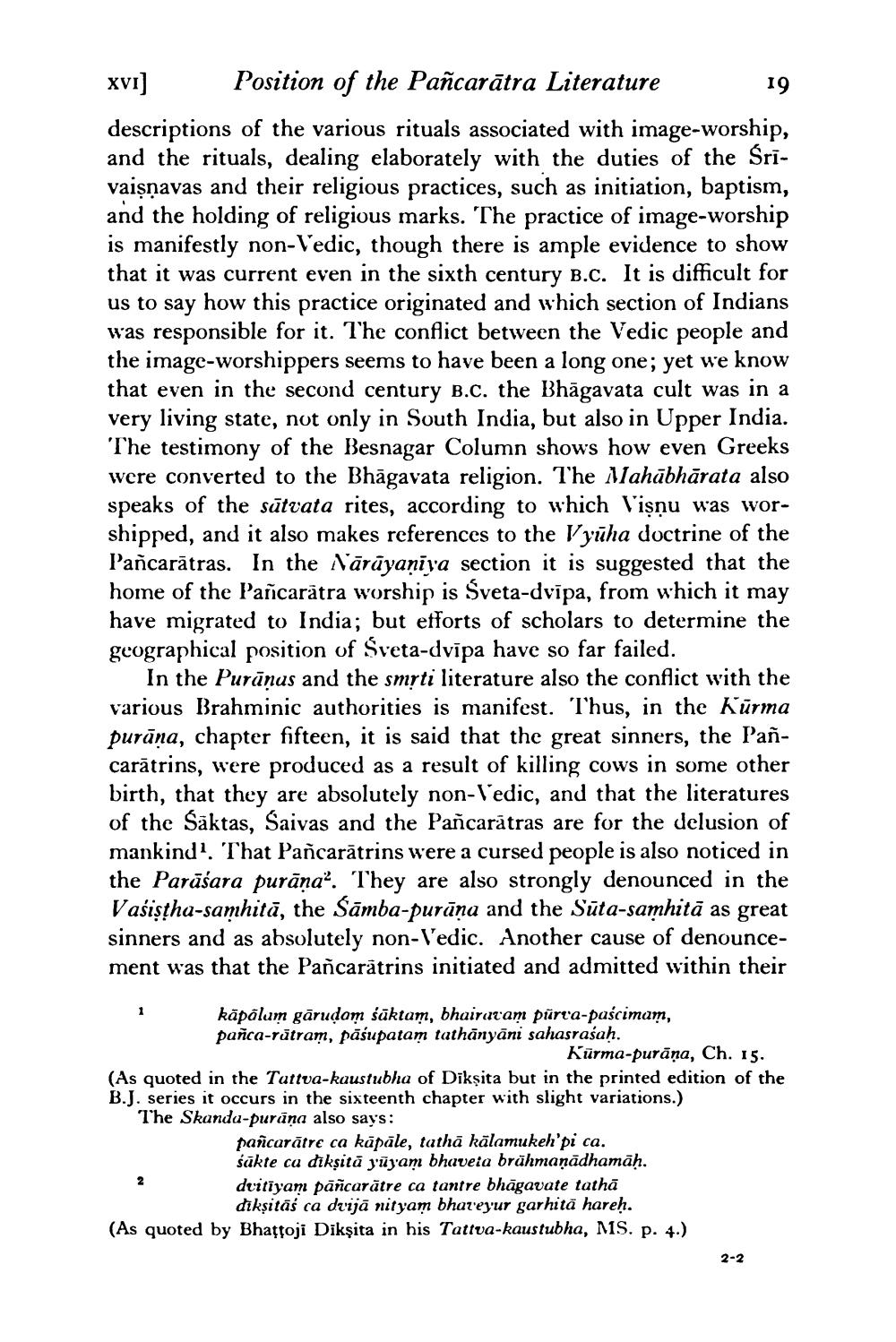________________
XVI]
Position of the Pañcarātra Literature
descriptions of the various rituals associated with image-worship, and the rituals, dealing elaborately with the duties of the Śrīvaiṣṇavas and their religious practices, such as initiation, baptism, and the holding of religious marks. The practice of image-worship is manifestly non-Vedic, though there is ample evidence to show that it was current even in the sixth century B.C. It is difficult for us to say how this practice originated and which section of Indians was responsible for it. The conflict between the Vedic people and the image-worshippers seems to have been a long one; yet we know that even in the second century B.C. the Bhagavata cult was in a very living state, not only in South India, but also in Upper India. The testimony of the Besnagar Column shows how even Greeks were converted to the Bhāgavata religion. The Mahābhārata also speaks of the sātvata rites, according to which Visnu was worshipped, and it also makes references to the Vyuha doctrine of the Pancarātras. In the Nārāyaṇīya section it is suggested that the home of the Pañcarātra worship is Sveta-dvipa, from which it may have migrated to India; but efforts of scholars to determine the geographical position of Sveta-dvipa have so far failed.
In the Purāņus and the smrti literature also the conflict with the various Brahminic authorities is manifest. Thus, in the Kurma purana, chapter fifteen, it is said that the great sinners, the Pancarātrins, were produced as a result of killing cows in some other birth, that they are absolutely non-Vedic, and that the literatures of the Saktas, Saivas and the Pañcaratras are for the delusion of mankind'. That Pancarātrins were a cursed people is also noticed in the Parāśara purāṇa2. They are also strongly denounced in the Vasistha-samhita, the Sāmba-purāṇa and the Sūta-samhitā as great sinners and as absolutely non-Vedic. Another cause of denouncement was that the Pañcarätrins initiated and admitted within their
1
kāpālam gāruḍam śāktam, bhairavam pūrva-paścimam, pañca-ratram, pasupatam tathanyāni sahasraśaḥ.
Kurma-purāṇa, Ch. 15.
(As quoted in the Tattva-kaustubha of Dikṣita but in the printed edition of the B.J. series it occurs in the sixteenth chapter with slight variations.)
The Skanda-purana also says:
pañcarătre ca kāpāle, tatha kalamukeh'pi ca.
sakte ca dikṣitā yuyam bhaveta brāhmaṇādhamāḥ. dvitiyam pancarătre ca tantre bhagavate tatha dikṣitāś ca dvija nityam bhareyur garhita hareḥ. (As quoted by Bhattoji Dikşita in his Tattva-kaustubha, MS. p. 4.)
2
19
2-2




